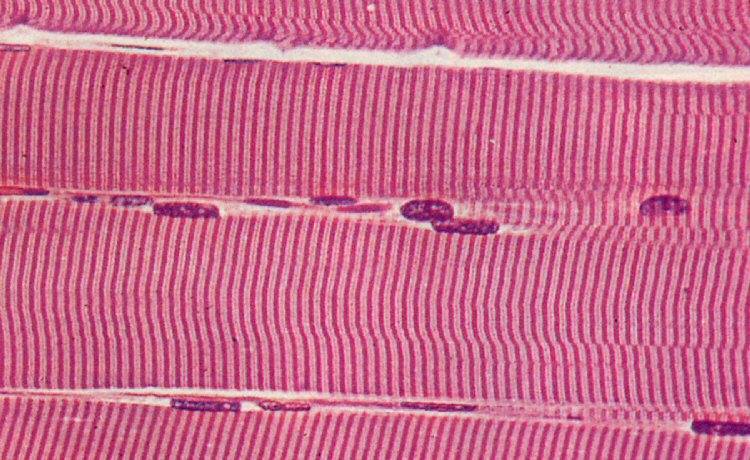- Your cart is empty
- Continue Shopping
Training according to the type of muscle fibers.
Training according to the type of muscle fibers.
What are the types of muscle fibers? How do we know the type of muscle fibers? Do we have to train according to them?

Types of Muscle Fiber:
1. Slow-responding muscle fibers (Type I), also called red fibers.
2. Fast-responding muscle fibers (Type II), also called white fibers.
Slow-response muscle fibers.
They contract slowly and have a low growth potential. These types of muscle fibers are rich in mithohondrias, which gives them a red look. Red muscle fibers are more resistant to fatigue than fast-response muscle fibers (white), can perform a larger number of repetitions and recover much faster even after hours of physical effort. Respectively, muscle growth with red muscle fibers requires a lot of repetitions in sets.
Fast-responding muscle fibers.
This type of muscle fibers contracts much faster and has an increase potential from 25% to 75% higher than Type I muscle fibers. Their disadvantage, however, is that they get tired very quickly, number of contractions is reduced, and their recovery may take a while.
Fast-responding muscle fibers are divided into two categories:
1. Type IIx
2. Type IIa
Type IIx are muscle fibers that contract rapidly and have a very high potential for growth, but they get tired fast and their recovery period is longer.
Type IIa have moderate growth rate and growth potential, do not get tired so quick and recover faster than type IIx.
There is also a category of muscle fibers called Hybrid. They are fewer than the fibers from the above categories and have properties from both muscle fiber groups. In time, they have the tendency to become type I or type II muscle fibers depending on the type of exercise they are doing over a long period of time (we are speaking about years). Also, these type of fibers are the only fibers we can influence and determine their belonging to a group of muscles depending on our sporting activity. To make a comparison between Type II or I muscle fibers, we have no influence on them because the scientific research has shown that they are genetically acquired and we cannot change them.
How do we know the type of muscle fibers?
The best way to find out what muscle fibers we have is biopsy. And this must be done with each muscle group separately. It is an expensive method, but is the only one that gives you a 100% response about the types of muscle fibers you do have.
Also, you can find different methods on the internet that claim that you cand find out the fiber you have, but they are not 100% sure. One of them would be:
– Inability to do at least 7 reps with 85% of the maximum weight (the maximum weight you make a single repeat)
– You can jump vertically at least 58cm
– You need more rest between sets than others.
The safest and closest way to the biopsy is to find out in time what type of muscle fibers you have. This is a safe way and involves training your muscles for longer periods of time using different methods. You also need to keep records of this. Let’s admit that you train the muscle groups for a period of 3 months after the 12-15-20 reps in a set. After that you change for the next 3 months to the method of 6-8-10 reps in a set. Well, tt’s quite simple to figure out when your muscles have progressed by comparing the results. Respectively you will see that if during many repetitions a muscle group increased more than in the period with few reps, then that muscle group has more red fibers, and vice versa. This is a method that requires time and writing, but it is a very safe one.
Do we have to train according to the type of muscle fibers?
Well, nor this time we can say 100% that practicing the workouts according to the type of muscle fiber is the best idea. However, studies have shown that people who did trained muscles according to the type of muscle fibers, have had better results than those who did not take this factor into account. It is good to mention that not all muscle groups in our body have more red or white muscle fibers. There are cases when muscle groups in the lower body of the body contain red fibers and muscle groups in the upper body contain white fibers, or vice versa. Each of us must individually learn this. Eventually, people in the sport world support muscle training by the type of fiber even if this is not 100% proven







Your point of view caught my eye and was very interesting. Thanks. I have a question for you. https://www.binance.com/register?ref=IHJUI7TF